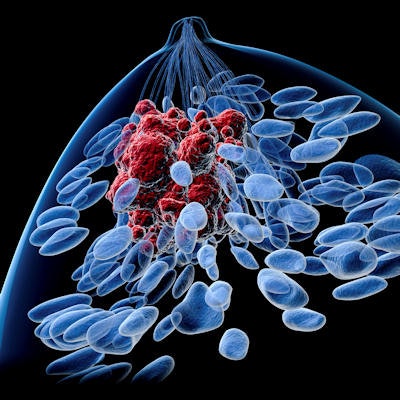
Previous mammograms contain data that could help identify women at high risk of breast cancer and even reveal which breast is likely to be affected, according to a study published on 27 April in JAMA Oncology.
A group led by researchers at Washington University School of Medicine in St. Louis studied changes in breast density over the course of a decade in almost 1,000 women and found that the rate of change differed significantly between 300 women who were later diagnosed with cancer and those who were not. The finding could aid efforts to identify women who could benefit from additional screening, the group suggested.
"Our best tool against breast cancer is early detection," said senior author Dr. Graham Colditz, PhD, and colleagues in a news release from the university.
Exactly why women with denser breasts are more likely to develop breast cancer is unknown, the authors explained.
To elucidate these associations, the researchers analyzed data in a previously established cohort of more than 10,000 women who were free from cancer when they enrolled. They identified 289 women who had developed cancer and compared them to 658 similar women who did not. Each woman had received regular mammograms. The researchers included 8,710 single-breast images, representing an average of four time points over a 10-year period for each patient.
Since breast cancer rarely develops in both breasts at the same time, the group analyzed the images of each breast separately. While women's breasts normally become less dense as they age, the researchers found that density declined significantly more slowly in the breasts that later developed cancer than in those that did not.
"In the future, I think we can use a woman's past history of density, plus her current density estimate, to better understand her risk level," added first author Shu Jiang, PhD.
The group is now developing prediction models that incorporate change in breast density over time, and plan to validate the models in independent datasets so they can be used in clinical care, according to the release.



















